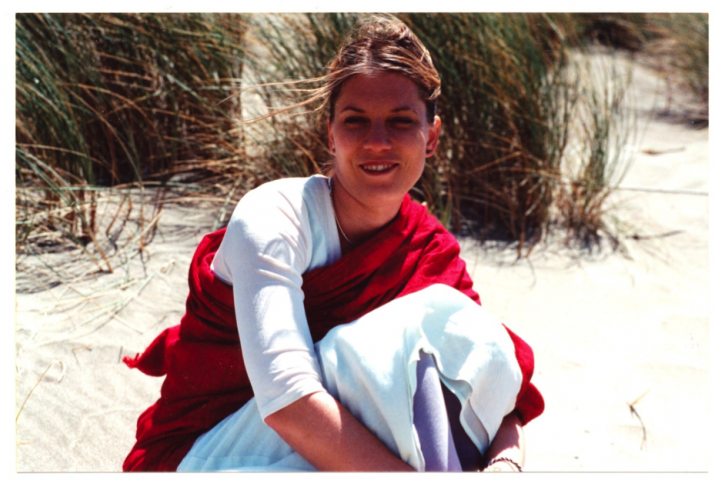
Sera Kunzang Lhamo (Sarah C. Beasley) is an ordained lay practitioner (ngakma) within the Dudjom Tersar lineage of the Nyingma School of Vajrayana Buddhism. She took refuge vows in 2000 with Anam Thubten Rinpoche, then moved to Pema Ösel Ling retreat center in the Santa Cruz mountains. There she studied closely with Lama Tharchin Rinpoche, an esteemed yogi from Repkong, Tibet, who was a close student of His Holiness Dudjom Jigrel Yeshe Dorje Rinpoche for 40 years. She practiced and studied with Lama Tharchin Rinpoche for 13 years, 6 of them in retreat, and also received various teachings from Thinley Norbu Rinpoche and Dzongsar Khyentse Rinpoche during that time.
Her western lamas, Lama Dechen Yeshe Wangmo, Lama Tsering Everest, and Lama Pema Drimed Norbu have also been very influential in her development as a traditionally-trained Vajrayana Buddhist in the West. Sera mentors Dharma students who are in retreat, as well as students studying somatic counseling, Indo-Tibetan students, and those working on their preliminary Buddhist practices (ngöndro). She enjoys dance, yoga, photography, food writing, and promoting artist-meditators of all kinds through her column for Buddhistdoor Global, Creativity and Contemplation.
Buddhistdoor Global: You have a book forthcoming titled Kindness for All Creatures: Buddhist Advice for Compassionate Animal Care (Shambhala Publications, summer 2019). What inspired you to write this book?
Sera Kunzang Lhamo: Rinpoche taught me many times, both directly and by example, how to better serve animal beings with compassion, so this led me to formulate the premise of the book. I think how we treat animals has a lot to do with how we treat ourselves and other human beings, as well as the precious Earth. We are in a dire situation with climate change and mass extinction, and need a complete turnaround. Compassion is the basis of an antidote to greed, ignorance, and shortsightedness. My book is a practical guide to bringing more kindness into all our interactions with animals, whether pets, wildlife, or livestock.
In Tibetan the term gong dzok means “fulfilling the lama’s wishes” (literally “mind-completion.”) When one’s teacher passes into Parinirvana, there is a very strong impulse to continue the thread of his or her work in the world, which is to bring Dharma to others. There is a constant questioning within of how can I best do this? There is more than one way, of course, but I felt that this book was a good start to sharing my Buddhist teachers’ viewpoints on helping animals.
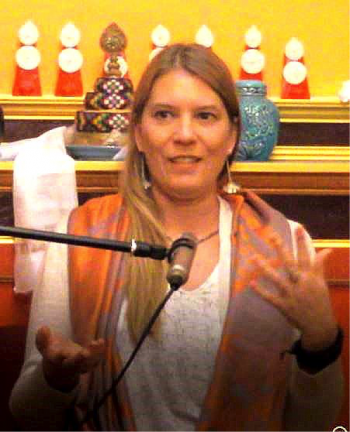
BDG: How did you first encounter Buddhism?
SKL: I met Taitetsu Unno at Smith College in 1990. He was a 13th generation priest in the Shin Pure Land School from Japan. He was a passionate college professor and introduced those of us who were interested to sitting meditation. This first taste definitely changed my perspective and was the seed for my future path as a Buddhist. I came from a background of confusion, anxiety, and depression, as many Westerners do. Seeing monks just sitting and resting their minds opened up my worldview tremendously. I have such fond memories of Professor Unno, and have been fortunate to be in touch with his son Mark, also a Pure Land priest and professor, while researching and writing my book.
BDG: You completed two traditional 3-year retreats. What impact have these had on your life?
SKL: Going into retreat was extremely difficult for me. I had a lot of attachment to the material world. And I had both inner and outer voices telling me retreat was selfish and restrictive. But deep down I knew I had to go, that it was my path. The Vajrayana practices seemed strangely familiar to me, as if I had always been connected to them. And I truly trusted my lama and yearned to learn from him. By diligently examining my own mind through the traditional meditation practices for more than six years, I could recognize a lot of negative habits and glimpse the freedom of which the great masters speak. This was by no means because I had any special capacity. It was based on the blessings of my precious teachers, and the protective environment in which to face and let go of deeply engrained patterns.
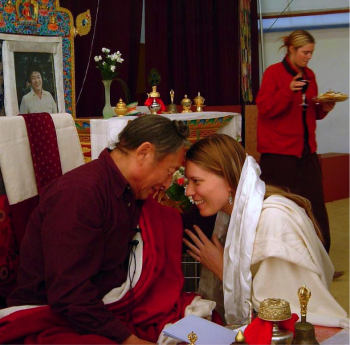
Having even a brief taste of awakening, or true nature, causes one to fervently wish it for all beings. I remember with devotion the look on Lama Tharchin Rinpoche’s face when he would softly say, “It’s so simple, you won’t believe me,” with tears in his eyes. He lovingly taught and trained us, like his teachers before him, so that we might wake up. If I can perpetuate even a shred of the Dharma my teachers spend their lives giving, then my energy is not in vain. This is one of the many blessings of belonging to a lineage.
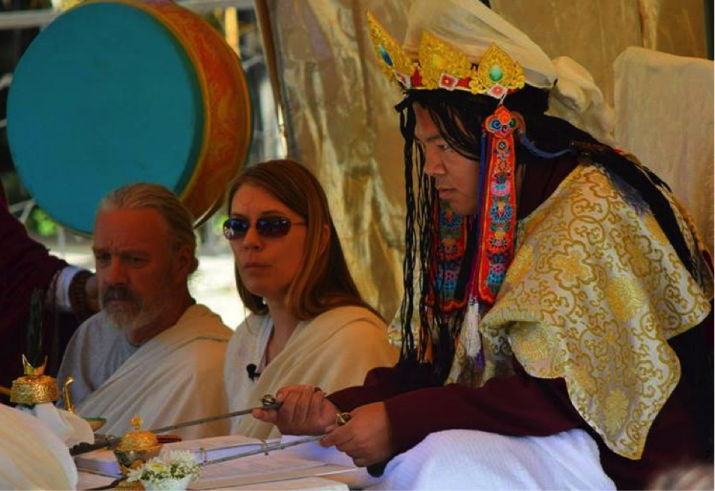
BDG: You trained for many years as umdze, or chant leader, for various practices, but especially Throma Nakmo, the inner manifestation of the wrathful dakini aspect of our mind. Why specifically this practice and what role do dakini practices have in our times?
SKL: The enlightened feminine principle—whether expressed though Prajñaparamita, Yeshe Tsogyal, Thröma Nakmo, Machig Labdron, Tara, or Vajrayogini—speaks to the lost aspects of ourselves (whether we identify as women, men, or non-binary) that may be suppressed or undervalued. Wisdom and skillful means are two sides of the enlightenment coin! Often in our world today, cleverness supplants actual wisdom, leading to many problems in our minds and in society. The wrathful practices are skillful means to effect rapid change, because there is no time to waste in waking up, both individually and collectively! Though these practices may seem very esoteric, and do require appropriate view and initiation, they are grounded, sane ways to realign our psychology and also our behavior.
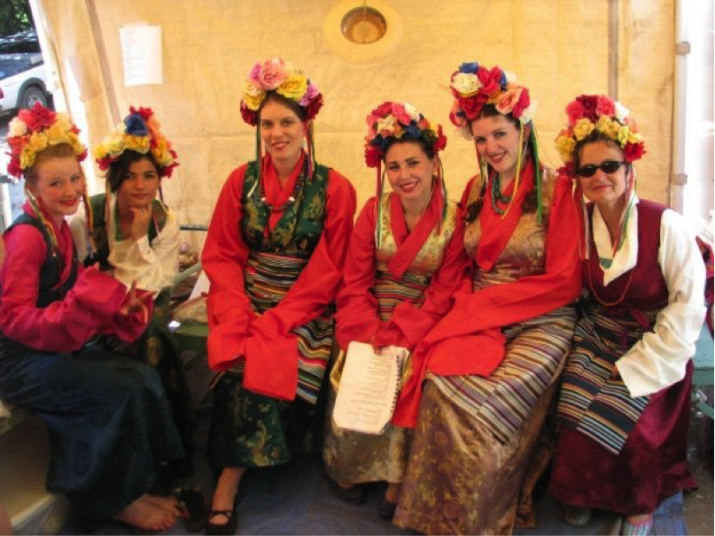
BDG: As an editor of English and Tibetan texts, you worked with Jnanasukha Foundation and Bero Jeydren Publications. You helped proofread the Tibetan language (pecha) Dō Gyü Rinpoche’i Dzö, The Complete Nyingma Tradition from Sutra to Tantra, for Alak Zenkar Rinpoche. Why is Tibetan text preservation so of interest to you?
SKL: Language is the heart of any culture, and written Tibetan preserves the lineage of Dharma over centuries. The oral lineages are very powerful and direct, but are more tenuous. When the Tibetans fled during the Chinese invasion of Tibet they often carried nothing but sacred texts on their backs. These were irreplaceable, and key to preserving the traditions and practices of Tibetan Buddhism. So much was lost, but through the work of dedicated organizations such as Tsadra Foundation, and the Tibetan Buddhist Resource Center, Dharma texts are collected, preserved, and made available online.
As a practitioner, I return again and again to the purity and depth of the written texts, to bring my mind home and to reconnect to the essential teachings through refuge and bodhicitta, wishing that I, and all beings, may awaken to our true nature.
Thank you so much for this opportunity to share. May all beings be free.
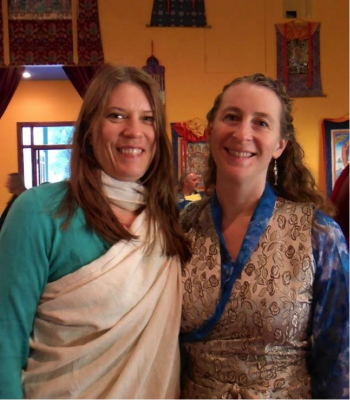
See more
Jnanasukha Foundation













